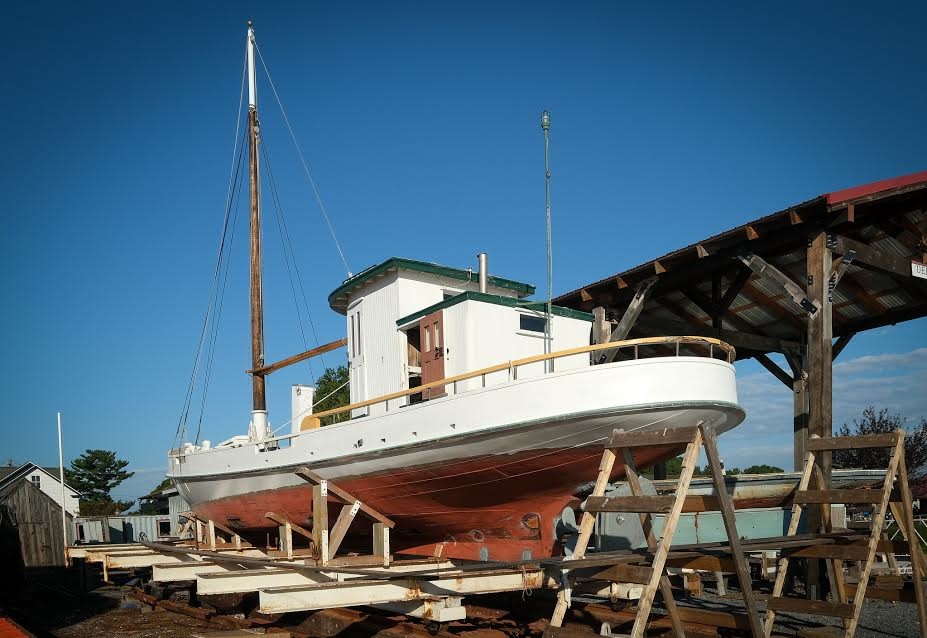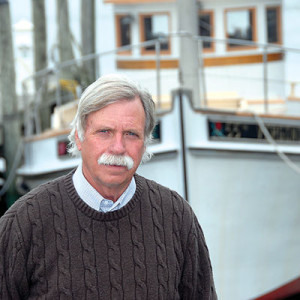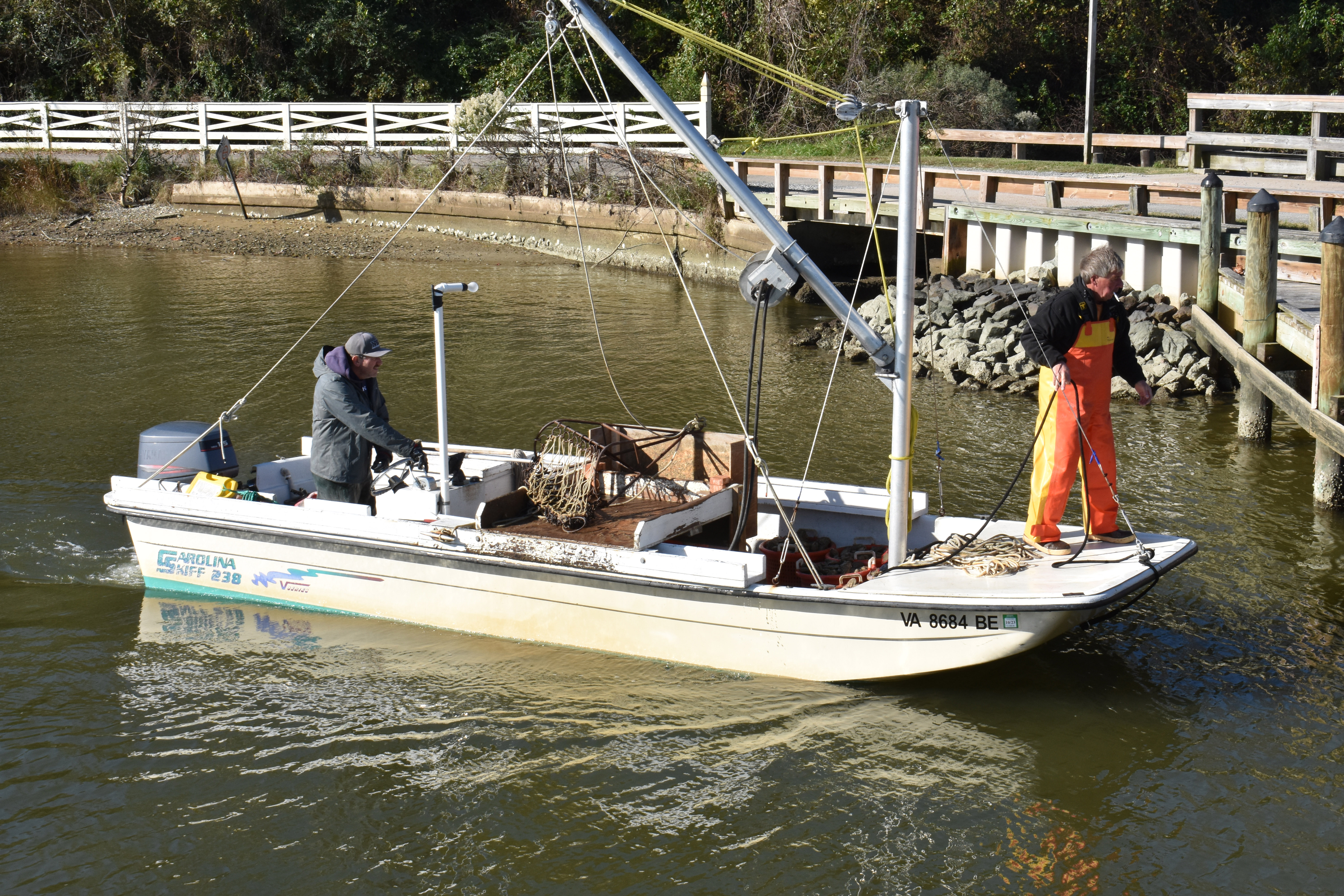Two 45-foot Chesapeake Bay wooden deadrise workboats, a Canadian Provincial 45-foot fiberglass boat and three Georgia built Carolina Skiffs constitute a small commercial fishing fleet.
Partners Chris Belvin of Tappahannock, Va., and Michael Shackelford of Gloucester County, Va., own, work and maintain this small fleet of boats.
“We’ve got a lot of boats between us, and we need a lot of boats,” says Belvin who, along with his partner, works from several commercial fishing licenses in Virginia’s portion of Chesapeake Bay and Atlantic Ocean.
“We do the routine maintenance ourselves on our boats and do it all at Hudgins Horn Harbor Marina in Port Haywood, Va.,” says Belvin. “Owner Wayne Hudgins was a commercial waterman and caters to us. He understands our needs, because he was one of us.”
This year, Belvin and Shackelford say they were lucky, as maintenance on their boats was confined to routine work. “We did all the maintenance work ourselves, but some years we need help and Wayne has the workforce there to help us.”
The fishermen work out of three Carolina Skiffs. In November, they were working in Virginia’s public hand dredge oyster fishery out of Urbanna Creek on the Rappahannock River. The watermen were dredging oysters from a 238 DLV, 24-foot Carolina Skiff and catching the 8-bushel-per-day limit in a few hours.
Built in Waycross, Ga., by Carolina Skiff, their skiff is rigged with an aluminum mast/boom, a 22-inch-wide oyster dredge and powered by a 115-hp outboard engine.
The watermen have two other 21-foot Carolina Skiffs. One is used in the oyster hand tong fishery out of Aberdeen Creek on York River and the other as a net hauling boat in the bay’s gillnet and haul seine finfish fisheries.
When maintaining skiffs, “we trailer a boat to the boatyard, coat it down with bleach, power wash it, paint the bottom, and we are ready to go,” says Belvin. “There’s not much maintenance to the skiffs.”
They work the Provincial 45-footer out of Virginia Beach, Va., in the Atlantic Ocean gillnet and conch-pot fisheries. Belvin owns a 45-foot wooden deadrise built in 1979 by retired Mathews County boatbuilder Edward Diggs, and Shackelford inherited a 1948, 45-foot wooden deadrise from his uncle.
The wooden deadrise boats are worked primarily in Virginia’s oyster aquaculture fishery and in the haul seine fishery. Belvin and Shackelford plant and grow oysters on state leased grounds in North and Ware rivers and in Milford Haven. They also contract with other lease holders to work their oyster grounds.
“From time to time, we have struggled to find a railway that will fit us in when we have a need whether it is an emergency or just routine maintenance,” says Belvin. “Wayne (Hudgins) has given us some relief in knowing that when we have a problem, we’ve got a railway that will work with us and get us back to fishing as soon as possible.”
Moving over to Maryland, the Chesapeake Bay Maritime Museum’s boatshop in St. Michaels, Md., has several boats on the rails. However, the yard is featured this month in NF because of a watershed event.
The museum has its first graduate from its shipwright apprentice certified program. The graduate, Zachary Haroth, a native of Saratoga Springs, N.Y., joined the museum’s boatshop after a year of study at the Northwest School of Wooden Boat Building in Port Townsend, Wash.

The museum’s four-year apprentice program is registered by the U.S. Department of Labor and Maryland Department of Labor, Licensing & Regulation. The program covers 8,000 hours of real work experience, as well as leadership and management skill development and certification in various areas of boat maintenance and construction.
Through the program, apprentices gain a working knowledge that includes skills like joinery techniques, ship repair, and construction. “The biggest benefit for me is broadening my horizons with some of the certifications that are offered… Those are pretty major for me to put on a resume,” said Haroth, who finished the program with certification in both welding and marine electrical systems.
“This innovative shipbuilding program, originally approved by the Maryland Apprenticeship and Training Program in July 2018, is the first and only program in the state helping to preserve Maryland’s maritime heritage,” said Maryland Labor Secretary Tiffany P. Robinson.
Post-graduation, Haroth isn’t going far — he’s since been hired by the museum as a full-time shipwright to work on construction of the Maryland Dove, a reproduction of the vessel that brought the first European settlers to Maryland in 1634.
In addition to Dove, the museum’s yard is working on restoration of a 1912 river tug named Delaware; a cabin-top replacement to the 1909 crab dredge boat Old Point; and doing the annual maintenance work on the Calvert Marine Museum’s Wm. B. Tennison, a bugeye converted to power.







